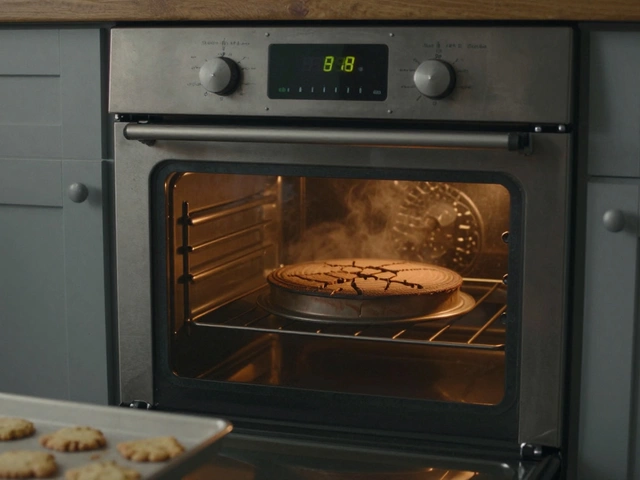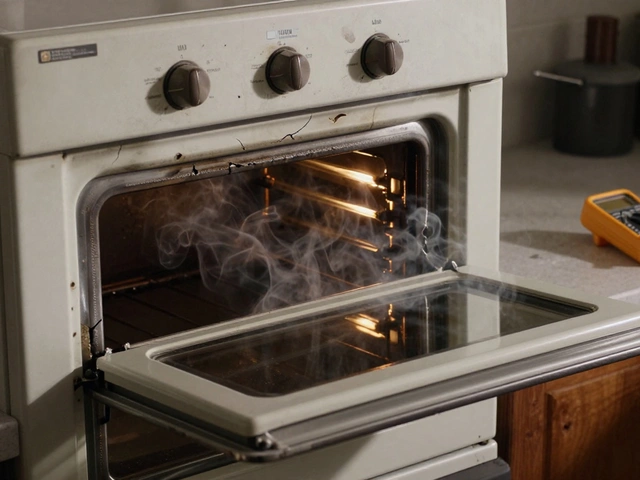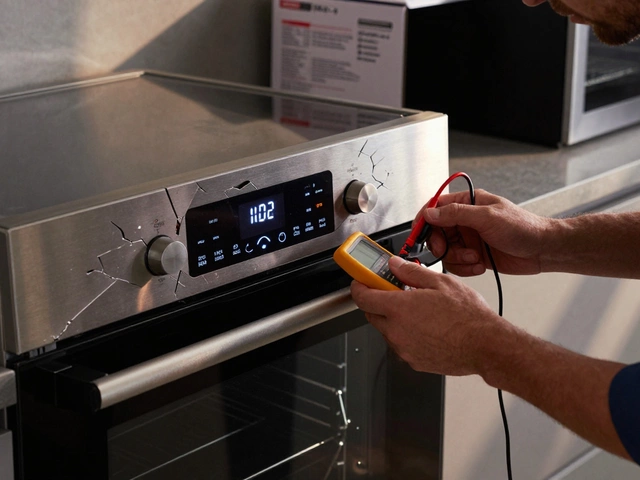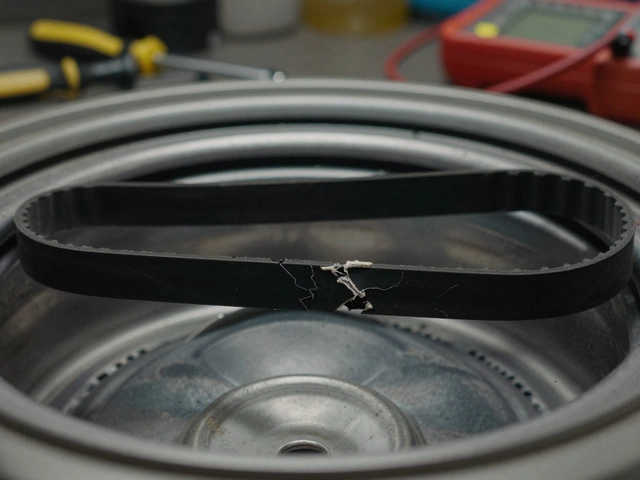If your electric oven isn’t heating up like it should, chances are the element’s shot. Plenty of folks panic, thinking this means a pricey repair or needing a whole new appliance. Here’s the thing—it’s usually a lot simpler (and cheaper) than you’d expect.
First off, the oven element is the part that actually gets hot. When it burns out, your oven might get warm, but it won’t reach the right temperature, or sometimes it just stays stone cold. Weirdly enough, this is one of the most common oven failures—right up there with busted door hinges.
Most standard baking or broil elements run between $20 and $60 if you buy them online or at a hardware store. But the total bill depends on more than the part’s sticker price. There’s also labor if you want a pro to swap it for you. In 2025, labor usually costs from $80 to $150 for a quick job, but it can go higher if your oven is built-in or if access is tricky.
- What Does an Oven Element Do?
- Typical Replacement Costs Explained
- DIY vs Hiring a Pro: What's Worth It?
- How to Spot a Bad Element
- Saving Money on Your Oven Repair
What Does an Oven Element Do?
The oven element is really the heart of your electric oven. It’s a loop of metal, usually found either at the bottom (bake element) or top (broil element) inside the oven cavity. When you turn on the oven, electricity flows through the element and makes it glow red hot, turning that energy straight into heat to cook your food. No heat, no dinner—it’s that simple.
There are usually two main types in most home ovens:
- Bake element (bottom)—Used for most cooking and baking, it heats up slowly and keeps the oven warm and steady.
- Broil element (top)—Blasts out intense heat from above, perfect for broiling steaks or getting that crispy top on casseroles.
Older ovens often have exposed elements you can see when you open the door. Newer models sometimes hide them under panels or use bigger loops for faster, more even heating. But they all work in pretty much the same way—turn on, get hot, and let you bake, roast, or broil your favorite meals.
If your food isn’t cooking evenly, takes forever, or the element never gets bright, that’s a big sign the element is busted. The electric oven simply can’t do its job without a working element.
Typical Replacement Costs Explained
Let’s get real about the numbers first. The main piece you’re dealing with is the oven element itself, and prices in 2025 haven’t changed all that much from previous years. Most electric oven elements are pretty standard, so they’ll run you about $25 to $60 for a new part, depending on your oven brand and whether you’re picking up a bake or broil element.
Of course, if you own a fancy model (think smart ovens or high-end European units), you might be looking at the higher end of that range—or even over $100 in rare cases. But for most folks with common ovens, you’ll fall nicely in that $25 to $60 window.
Here’s a quick look at what you might expect to pay in 2025:
| Replacement Part | Cost |
|---|---|
| Bake Element (Standard) | $25 - $50 |
| Broil Element (Standard) | $30 - $60 |
| High-End/Smart Oven Element | $60 - $120 |
If you have a pro do the work for you, labor is where the cost jumps. A straightforward job for a freestanding oven might cost $80 to $150 in labor, since most techs charge a flat rate for small appliance repairs. If you have a wall oven or something built in, the labor could go up another $50 or more just for the extra hassle of pulling the unit out.
So, the ballpark total for electric oven element replacement falls between $100 and $210 for most people—parts and labor included. Obviously, if you do it yourself, you dodge the labor bill. Some repair shops also tack on a service call fee, usually $50 to $90, if you ask them to come out for an inspection and quote. Sometimes this gets rolled into the total cost if you have them do the repair, but it’s smart to ask ahead.
Watch out for cheap knockoff parts. It might be tempting to go for the lowest price online, but off-brand elements can burn out faster or may not fit right. Stick to parts made for your exact oven model—even if you pay a little more, it can actually save you hassle later.

DIY vs Hiring a Pro: What's Worth It?
So, you’re staring at your broken oven, wondering if it’s time to roll up your sleeves or just call in the cavalry. Swapping out an element can actually be a pretty quick job—most folks with a screwdriver, some basic safety sense, and about 30 minutes can handle it. But let’s break down what’s easy, what’s risky, and what might make you second-guess going full DIY.
If you’ve got a pretty standard oven, a replacement element usually just slides out after you remove a few screws. No special tools required. Here’s the usual step-by-step for the brave:
- Make absolutely sure the oven is unplugged—no joke, live wires can bite hard.
- Take out any racks for better access.
- Unscrew the mounting plate or tabs holding the element.
- Carefully disconnect the old element from the wiring (take a quick pic with your phone first—super helpful for reassembly).
- Attach the new element, screw it back in, then plug in the oven and test it.
This simple fix saves you the electric oven repair labor charge, which ranges from $80 to $150 depending on where you live. Some shops even charge extra if they have to wait for special order parts or offset travel time. Here’s a quick look at how the numbers stack up:
| Option | Average Part Cost | Typical Labor Cost | Total Cost |
|---|---|---|---|
| DIY | $20 - $60 | $0 | $20 - $60 |
| Hire a Pro | $20 - $60 | $80 - $150 | $100 - $210 |
But not all ovens are created equal. Wall ovens can be a hassle to access, and if your kitchen is on the older side, wires might be brittle or the install could get dicey. If something feels off (burnt wires, lots of corrosion, or you’re just not sure), it’s safer to call a pro. A botched repair could fry more than just dinner.
One last tip: many warranties—especially for newer ovens—get voided if you fix it yourself. Always check your paperwork before popping out that element. Still, for out-of-warranty units with common setups, doing it yourself can save you serious money.
How to Spot a Bad Element
Catching a failing oven element early can save you a lot of hassle and money. Spotting a dead or dying element isn’t rocket science, but you do need to know what to look for.
The most obvious sign is your oven not heating up correctly. Maybe your cookies are all doughy after the timer dings, or the top broil setting just doesn't get that nice brown finish on a pizza. But it’s not just about uneven cooking—a bad element often shows clear visual clues.
- electric oven element won’t glow red when it’s turned on. A working element gets a bright, even red color. If it stays dark, or only part of it heats up, that’s a big red flag.
- Look for visible damage like blisters, burn spots, or even breaks/cracks along the element. Those parts are toast—literally.
- Sparks, smoke, or popping noises when you turn the oven on. If you see or hear any of these, turn the oven off right away and unplug it if you can.
- Sometimes, there’s a bad smell—think burning metal or plastic. That usually means the element fried or is close to frying.
If you’re dealing with one of these, check out this table and see how the signs stack up in real life kitchens:
| Warning Sign | What It Usually Means | DIY Friendly? |
|---|---|---|
| Element won’t glow red | Burned out or broken circuit | Yes |
| Sparks or popping | Element shorting or outright failed | No (turn off power first!) |
| Burn marks or cracks | Visibly failed element | Yes |
| Oven not heating | Possibly bad element or faulty wiring | Yes, if element is the cause |
If you’re handy and feel safe, unplug the oven and double check the element with a simple continuity test using a multimeter. No continuity usually means time to replace. Always put safety first though—dealing with electricity can be risky, so if you have any doubts, calling a technician is the smart move.

Saving Money on Your Oven Repair
Here’s the plain truth: if your oven’s element is busted, you don’t have to spend a ton to get things cooking again. There are a bunch of ways to keep the repair bill low if you know what you’re doing.
First, check if the oven is still under warranty. Most electric ovens come with at least a one-year warranty, and some brands like GE or Whirlpool extend coverage on parts for a few years. You might get a free replacement or only pay for labor. Always double-check before whipping out your wallet.
If you’ve got a little DIY spirit, swapping the element yourself can save a chunk of change. It’s not rocket science—usually just a couple of screws and sliding some wires off the old element and onto the new. Just make sure you unplug the oven or shut off the breaker first. Watch for online tutorial videos specific to your model, or even grab the factory manual off the manufacturer’s website for step-by-step pictures.
- Buy the part yourself instead of through a repair company. The markup at appliance shops is sometimes double what you’ll pay on sites like Amazon, RepairClinic, or even just walking into Home Depot with your oven model number.
- Check for local appliance recycling centers. Lots of them have working elements pulled from junked ovens that sell for way less—sometimes under $15.
- If you do need a pro, get more than one quote. You’d be surprised how much repair shops’ prices can vary for the same electric oven element job.
- Avoid emergency or weekend calls if you can. After-hours rates get expensive fast, and most elements hold out until regular business hours.
One last tip—if you know your oven’s model number, bring it with you or type it into any website you’re searching. Wrong parts are a common headache and cost more in the long run.









